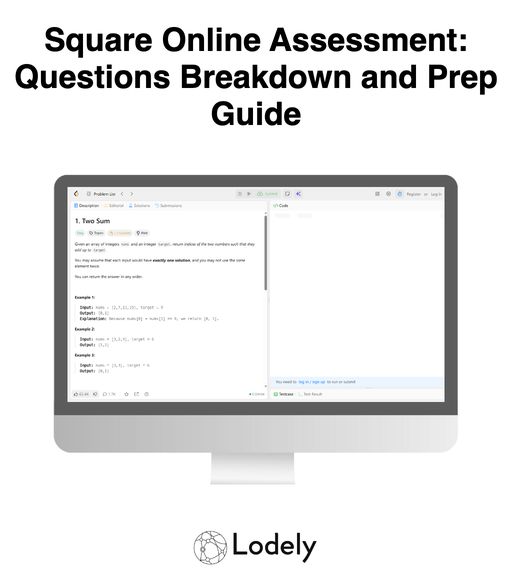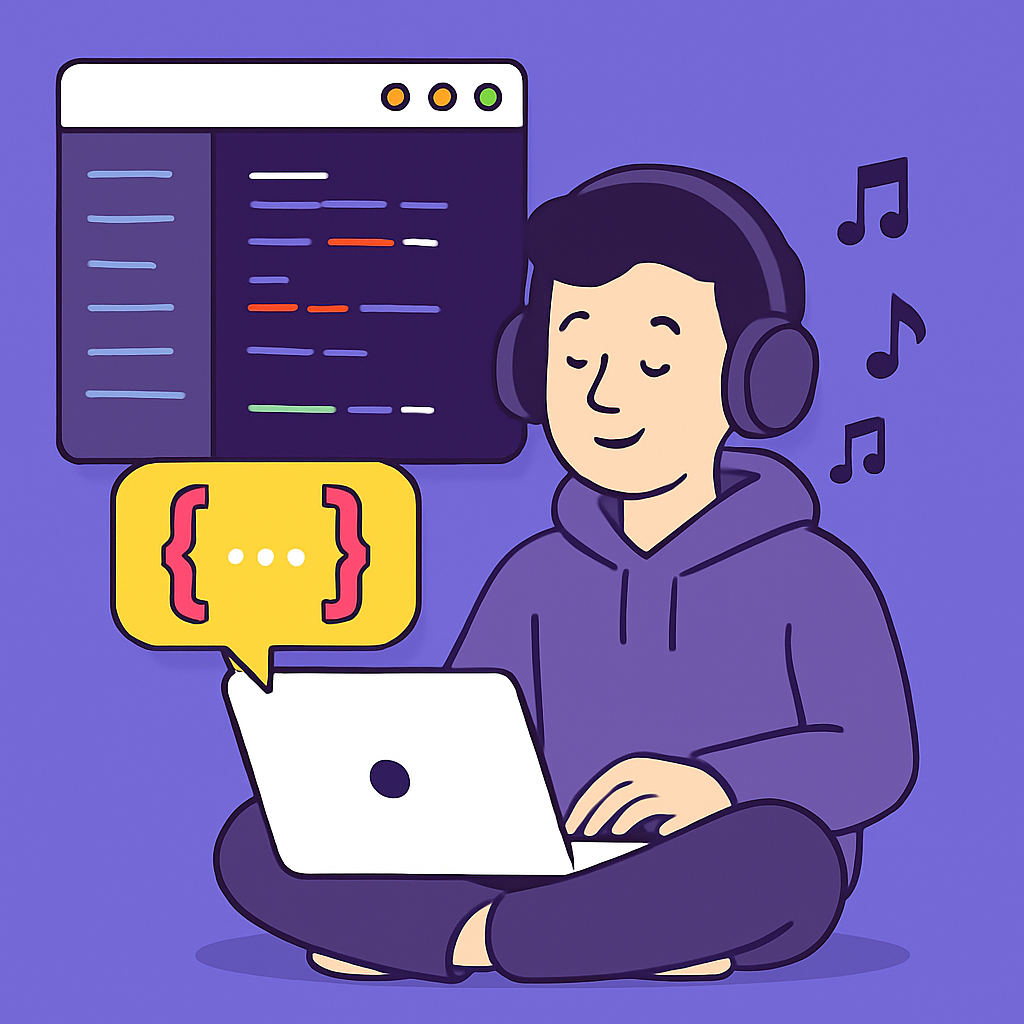Square Online Assessment: Questions Breakdown and Prep Guide
Wondering what the Square OA looks like and how to prep without overstudying the wrong things? You’re not alone. Candidates report everything from vanilla algorithm questions to payment-flavored problems: reconciling transaction feeds, rate limiting API calls, and dealing with currency precision. The trick is knowing what patterns Square actually evaluates — and practicing them under timed conditions.
If you want to walk into the Square Online Assessment confident and ready, this guide gives you the real breakdowns and a plan to follow.
When to Expect the OA for Your Role
Square (part of Block) tailors the OA by role and team. Expect variations in platform and content depending on what you applied for.
- New Grad & Intern Roles
- Very common. Expect a CodeSignal or HackerRank link shortly after recruiter contact. For internships, the OA is often the main technical filter.
- Software Engineer (Backend / Full-Stack / Mobile)
- Standard. Typical OA is 2–3 algorithmic questions in 70–90 minutes. Backend sometimes gets an additional I/O or parsing task.
- Data Engineering / Analytics
- Mix of algorithms and data manipulation. You may see log parsing, windowed aggregations, or ETL-style transformations.
- SRE / Infrastructure / Security
- Still an OA, often with scripting, parsing, and systems concepts (rate limits, resource utilization, failure handling).
- Senior & Staff Engineers
- Some teams skip the generic OA and go straight to live coding or design, but many still use an OA as a first pass.
Action step: As soon as you hear from a recruiter, ask, “Which platform and how many problems? Any domain focus (e.g., data parsing, API rate limiting)?” They’ll often share the platform, duration, and hints about content.
Does Your Online Assessment Matter?
Short answer: yes — more than most candidates expect.
- It’s the primary gate. A strong resume gets you in; your OA performance moves you forward.
- It sets expectations. Interviewers sometimes review your OA submissions and use them to guide later questions.
- It’s real-world aligned. Square’s domain involves money, merchant scale, and reliability. Expect tests of precision, correctness, and performance under edge conditions.
- It shows how you work. Clean code, naming, tests, and thoughtfulness around complexity and edge cases matter.
Pro Tip: Treat the OA like a live interview. Communicate via comments, handle edge cases explicitly, and write code you’d be proud to show a peer.
Compiled List of Square OA Question Types
These categories mirror what candidates report and what aligns with Square’s payments ecosystem. Practice these patterns:
- Two Sum / Pair Matching — type: Hash Map
https://leetcode.com/problems/two-sum/ - Merge Intervals (settlement windows, availability) — type: Intervals / Sorting
https://leetcode.com/problems/merge-intervals/ - Logger Rate Limiter — type: Hash Map / Sliding Window
https://leetcode.com/problems/logger-rate-limiter/ - Design Hit Counter — type: Queue / Sliding Window
https://leetcode.com/problems/design-hit-counter/ - LRU Cache (POS offline cache) — type: Design / Hash Map + DLL
https://leetcode.com/problems/lru-cache/ - Longest Substring with At Most K Distinct — type: Sliding Window
https://leetcode.com/problems/longest-substring-with-at-most-k-distinct-characters/ - Top K Frequent Elements (merchant/event analytics) — type: Heap / Bucket Sort
https://leetcode.com/problems/top-k-frequent-elements/ - Accounts Merge (dedupe identities) — type: Union-Find / Graph
https://leetcode.com/problems/accounts-merge/ - Course Schedule (dependency/cycle detection) — type: Graph / Topological Sort
https://leetcode.com/problems/course-schedule/ - Network Delay Time — type: Graph / Dijkstra
https://leetcode.com/problems/network-delay-time/ - Fraction to Recurring Decimal (money formatting, precision) — type: Math / Strings
https://leetcode.com/problems/fraction-to-recurring-decimal/ - Find Median from Data Stream (rolling metrics) — type: Heaps
https://leetcode.com/problems/find-median-from-data-stream/ - Koko Eating Bananas (binary search on answer: throughput, SLAs) — type: Binary Search
https://leetcode.com/problems/koko-eating-bananas/ - Group Anagrams (normalization, bucketing) — type: Hashing
https://leetcode.com/problems/group-anagrams/
How to Prepare and Pass the Square Online Assessment
Think of your prep like a tight training cycle. Learn the patterns, then prove you can execute under time pressure.
1. Assess Your Starting Point (Week 1)
List the topics you’re solid on (arrays, hashing, sliding window) and those you avoid (graphs, heaps, union-find). Use LeetCode Explore or HackerRank interview kits to benchmark with a timer. Your goal: identify gaps, not chase streaks.
2. Pick a Structured Learning Path (Weeks 2-6)
You have options:
- Self-study on LeetCode/HackerRank
- Best for self-directed learners. Build topic queues and practice with strict timers.
- Mock assessments / bootcamps
- Some platforms simulate proctored, multi-question OAs similar to CodeSignal/HackerRank.
- Career coach or mentor
- A software engineer career coach can review code quality, help pace you, and sharpen communication.
https://www.lodely.com/software-engineering-career-coach
3. Practice With Realistic Problems (Weeks 3-8)
Target 40–60 problems focused on Square-relevant categories: sliding window, hashing, intervals, graphs, heaps, and fixed-point math. After solving, refactor for clarity and annotate edge cases (empty input, large N, duplicate keys, timezone boundaries).
4. Learn Square-Specific Patterns
Square builds payment tools for millions of sellers. Expect patterns like:
- Money correctness
- Store amounts as integers in minor units (cents) to avoid float issues. Understand rounding rules per currency (e.g., cash rounding, 0-decimal currencies like JPY).
- Idempotency & retries
- Deduplicate requests using idempotency keys; ensure re-entrancy under at-least-once delivery.
- Offline-first and sync
- POS devices can lose connectivity; local buffering, conflict resolution, and replay ordering matter.
- Timezones & end-of-day
- Settlement batches and daily reports cross timezone boundaries. Be careful with date truncation and daylight changes.
- Rate limiting & quotas
- Sliding window or token bucket style constraints for API calls.
- Pagination & large listings
- Cursor-based pagination and stable ordering for large merchant inventories or transaction logs.
5. Simulate the OA Environment
- Use CodeSignal/HackerRank practice environments.
- Set a 70–90 minute window for 2–3 problems.
- Disable hints. No copy/paste from old solutions. Type it fresh.
- Practice reading constraints fast, drafting tests, and pacing: 10 minutes to pick an approach, 25–30 to implement, 10 to test and optimize.
6. Get Feedback and Iterate
- Revisit your solution a day later: can you reduce complexity or simplify code?
- Track recurring mistakes: off-by-one, overflow/precision, missed null/empty cases, slow I/O.
- Share solutions with a mentor or peer for review focused on clarity and edge-case handling.
Square Interview Question Breakdown

Here are featured sample problems inspired by the OA categories above, tuned to Square’s domain.
1. Transaction Reconciliation Across Feeds
- Type: Hash Map / Two-Pass
- Prompt: You receive two feeds: POS events and settlement entries. Each event has an id and amount in cents; settlements may be batched with the same total. Determine which events are unmatched and which settlements are partial/over-matched.
- Trick: Normalize amounts to integer cents; use hashing of ids and sum buckets. Be careful with duplicates and partial matches.
- What It Tests: Hashing, data normalization, and real-world reconciliation logic.
2. Sliding-Window Rate Limiter
- Type: Queue / Sliding Window
- Prompt: Implement allow(userId, timestamp) that returns true if the user can make a request within a limit of N per rolling W seconds, else false.
- Trick: Keep a per-user deque of timestamps; pop stale entries, then check size before enqueue. O(1) amortized per call.
- What It Tests: Time-window logic, per-key state, memory/time trade-offs.
3. Currency-Safe Arithmetic and Rounding
- Type: Math / String Parsing
- Prompt: Given a list of prices and discounts in string form (e.g., “12.30 USD”, “5%”), compute final totals in minor units, respecting currency precision (e.g., 2 decimals for USD, 0 for JPY) and rounding half-up.
- Trick: Convert to integer minor units early, avoid float; parameterize precision by currency code.
- What It Tests: Handling money safely, parsing, and correctness under precision constraints.
4. Idempotent Request Processor
- Type: Design / Hash Map with TTL
- Prompt: Implement process(requestId, payload) such that repeated calls with the same requestId return the same result without side effects. Evict old requestIds after T minutes.
- Trick: Cache requestId to result; ensure thread-safe check-then-set; handle TTL eviction efficiently (min-heap or time-bucketed sets).
- What It Tests: Concurrency-sane design, deduplication, memory management.
5. Merchant Inventory Pagination
- Type: Sorting / Pagination / Stable Ordering
- Prompt: Given a stream of item updates with version numbers, return the next page of K items after cursor C sorted by (updatedAt desc, id asc). Ensure stable results when updates arrive between calls.
- Trick: Use cursor encoding of the last composite key; maintain deterministic tie-breakers; be careful with off-by-one on page boundaries.
- What It Tests: Real API pagination mechanics, ordering, and correctness under concurrent updates.
What Comes After the Online Assessment

Passing the OA earns you a deeper look. From here on, Square evaluates how you design, communicate, and build reliable systems for money movement.
1. Recruiter Debrief & Scheduling
Expect an email within a few days if you pass. You’ll get next-step details and timelines. Ask about the structure of interviews (coding vs. design vs. behavioral) and any team-specific focus (payments, POS, risk).
2. Live Technical Interviews
You’ll pair with Square engineers over a collaborative editor or video call. Typical content:
- Algorithms & Data Structures: Similar patterns to the OA, but interactive.
- Debugging & Refactoring: Walk through a broken function or optimize a working one.
- Communication: Explain trade-offs, edge cases, and complexity as you code.
Pro tip: Re-read your OA solutions. Interviewers sometimes ask you to explain prior choices and how you’d improve them.
3. System Design / Architecture Round
For mid-level and senior roles, expect a 45–60 minute design session. Example prompts:
- Design an idempotent payment API with retries and rate limits.
- Build an offline-first POS sync layer for unreliable networks.
- Design a settlement/ledger system with auditability and reconciliation.
They assess:
- Problem decomposition and clear requirements framing
- Scale, consistency, and failure-mode thinking
- Pragmatic trade-offs and evolution over time
4. Behavioral & Values Interviews
Square emphasizes customer empathy and economic empowerment. You might hear:
- “Tell me about a time you made a system simpler and more reliable.”
- “Describe a time you handled a production incident and what you changed after.”
- “How do you balance speed of delivery with correctness when money is involved?”
Use the STAR method and highlight ownership, clarity, and bias toward maintainable, reliable systems.
5. Final Round / Virtual Onsite
A multi-interview loop that can include:
- Another coding round
- Another design or architecture deep dive
- Cross-functional chats with product, data, or security
Plan for context switching and steady energy over several hours.
6. Offer & Negotiation
If successful, you’ll receive verbal feedback followed by a written offer. Compensation may include base, bonus, and equity. Do your market research and be ready to negotiate thoughtfully.
Conclusion
You don’t need endless question grinding — you need targeted practice and realistic reps. If you:
- Identify your gaps early,
- Drill Square-style patterns (money precision, idempotency, rate limits, pagination),
- Practice under timed, proctored-like conditions,
- Write clean, explicit code with edge-case coverage,
you’ll turn the Square OA from a hurdle into your advantage. The OA gets you in the door; your clarity, systems thinking, and reliability mindset carry you the rest of the way.
For more practical insights and prep strategies, explore the Lodely Blog or start from Lodely’s homepage to find guides and career resources tailored to software engineers.






%2C%20Color%3DOriginal.png)



